International Horse Racing
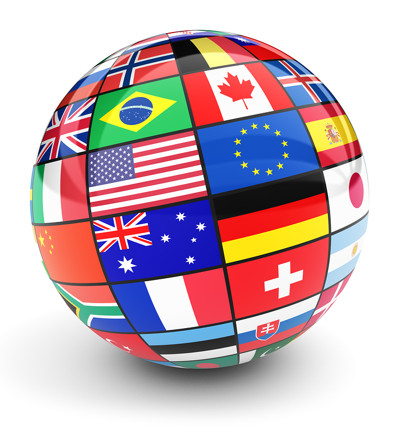
The internet has made sports like horse racing as accessible around the world as it’s ever been. It dates back hundreds of years now and whilst the guts of each race is similar, the way in which they are conducted can vary quite a lot.
You tend to find a certain range of races within each country. For example, in the UK we are used to a mix of flat racing in the summer and then jumps or National Hunt through the winter months. This is mainly to do with the weather as much as anything, offering the flat racing horses the best ground possible to basically, run really fast.
You then jump across to somewhere like America, and you see a much bigger bias to that of flat racing, and in particular, thoroughbreds. Large parts of the country get good weather pretty much all year around which means that they are more suited to flat racing.
The trends and race types will vary all over the world, but one thing we can add is that the international horse racing scene is one that is continuing to grow. The industry as a whole is reported to be worth over $115 Billion, which makes it one of the biggest in the world.
Major Races From Around the World
| Country | Major Races | Prize Money |
|---|---|---|
| USA | Kentucky Derby Preakness Stakes Belmont Stakes Breeders Cup Classic Pegasus World Cup |
$3 million $1.5 million $1.5 million $6 million $9 million |
| Australia | Melbourne Cup The Everest Queen Elizabeth Stakes |
$8 million $13 million $4 million |
| France | Prix de l’Arc de Triomphe Grand Steeple-Chase de Paris |
€5 million €850,000 |
| Dubai | Dubai World Cup | $12 million |
Throughout this article we will take a look at racing within a number of different countries and highlight some of the major differences of how they work.
USA
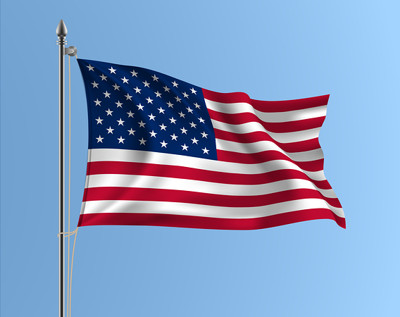
Horse racing is a sport that often gets overlooked by many in the US. There’s no doubt that the likes of American Football, Ice Hockey, Basketball and Baseball are the core sports of the country, but horse racing is not too far behind, both in terms of viewing figures and in terms of money generated.
It was around the turn of the 19th Century that horse racing really started to take off in the US. There were several tracks that started to emerge, and the American Jockey Club was formed in 1894, adding some much-needed order for the sport.
The season for the US is pretty much all year round, which is quite unusual. For most the start of the season is signified by that of the Pegasus World Cup in January and then the finale is the Breeders Cup in November. Given the favourable climates, it means that the flat season is often the one that is most favourable and can “chase the sun” around the warmer climates. Something that certainly cannot be done in the UK.
Whilst the US racing is predominately a flat-based sport, they include a number of different race types that we’ve listed below.
- Quarter Horse Races – These are some of the shortest races in the US and they run over the quarter mile. The races host some of the fastest horses in the world and currently have over 3 million fully licensed and registered horses for these races alone. It’s claimed that the elite reach speeds of up to 55mph.
- Thoroughbred Horse Races – The thoroughbred horses are a little more generalised, but they are still bred specifically for racing, hence the term thoroughbred. These horses can run over a number of different race types, which will include both flat and jump racing.
Whilst flat racing does have a precedent over jump racing, the latter is still popular. The rules are a little different to that of the UK, which we outline next:
- Thoroughbred flat racing – The flat racing tracks tend to range from around 0.5 miles up to 1.5 miles, although some races are longer than this still. They are the most popular types of races and come in a series of different track materials, which includes dirt, turf and synthetic.
- Thoroughbred jump racing – Jump racing is actually very similar to the UK and they include a number of obstacles that the horses must navigate over. Tracks range from around 2 miles up to 4.5 miles for the longer courses. Like the UK they are sometimes referred to as National Hunt or Steeplechase races.
What’s interesting about the US market is that there are a number of “niche” classifications as well.
- Standard horse races – These are referred to as Standardbred horses. They’re horses that maybe aren’t fast enough to be in the thoroughbred classification, but still good runners. Often, they are used to harness racing and within horses shows (think point to point).
- Endurance horse races – Endurance racing is another that is popular in the US. Races can range in terms of distance, running from between 10 and 100 miles for a single race. As you can imagine, they are made up very differently to that of your sprinters.
- Arabian horse races – This is less common in the US but is inclusive of horses who’s roots can be traced back to the Middle-East.
There are over 300 horse racing tracks across the US. The tracks cover a wide range of race types, with everything from your thoroughbred to that of your endurance races.
California has the highest number of notable tracks in the country, with around a dozen all hosting Group 1 races at some point in the year. Other notable states are that of New Mexico, Kentucky, Louisiana and Florida.
Triple Crown
The Triple Crown is probably the most lucrative award in the American horse racing calendar. It’s made up of three races:
- Kentucky Derby
- Preakness Stakes
- Belmont Stakes
To win the Triple Crown a horse must win all three of these races in the same year. It’s been running in its current form since 1950, but they have backdated any winners to that of 1875 when the Kentucky Derby was first formed.
Since then, only 12 horses have won the Triple Crown, with Justify being the most recent, winning in 2018 under jockey Mike Smith with trainer Bob Baffert. Before that American Pharaoh completed the feat in 2015, but he was the first winner since 1978, proving how tough an accomplishment this is.
Kentucky Derby
The Kentucky Derby is not only one of the season highlights in the US, but it’s also one of the world’s biggest horse racing. Millions of horse racing followers tune in from across the globe to watch what is often described as “the most exciting two minutes in sport”.
The race has been running since 1875 and is hosted by Churchill Downs racetrack, in Kentucky, of course. It comes with a purse of $3million and the winner takes home a staggering $1.8 million for their work. The race is run over 1.25 miles (10 furlongs) and is open to 3-year-olds.
Preakness Stakes
Baltimore’s Primitico Race Course plays host to the middle leg of the Triple Crown, which comes in the form of the Preakness Stakes. The race has been running since 1873 and with has a purse of $1.5 million.
The Preakness Stakes is run over 1 3/16 miles (9.5 furlongs) and again, is open to just 3-year-old horses.
Belmont Stakes
The Belmont Stakes is the book end of the Triple Crown and takes place in mid-June. It’s hosted at Belmont Park and given that it’s the final leg of the three, has been able to crown some of the greatest flat racing horses of all time.
Other Major Races
Breeders Cup
The Breeders Cup has only been running since 1984, so in horse racing terms it’s still a fairly “new” race. But it’s quickly been revered as one of the best and most lucrative race combinations in the world, with prize money ranging from $1 million up to $6 million for the Breeders’ Cup classic. In total there is $28 million over the course of the series.
What’s unique about the two-day meeting is that it moves location all around the US. Horses have to qualify for the meeting and each race by winning a series of feeder races or by earning points throughout the season.
Pegasus World Cup
The Pegasus World Cup was first run in 2017 and at the time, the $12 million purse meant that it was the richest horse race in the world. They only went and broke their own record the following year, by declaring a massive $16 million purse, but this was later reduced to “just” $9 million for the 2019 rendition.
The race is for 4 years old and up and takes places at Gulfstream Park in Florida. The Grade 1 listed race is run over 1 1/8 miles and on a dirt track.
Australia
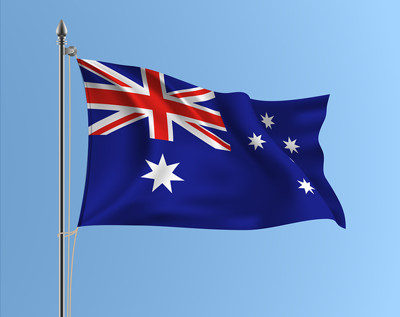
Australia has to be one of the most fascinating countries for horse racing. Behind Aussie Rules football and rugby, horse racing sits as the countries 3rd biggest sport. It generates over $14 billion worth of wagers each year, which covers for about 15% of the total market.
What people aren’t aware of with Australian racing is the sheer scale of it. They have over 460 horse racing tracks across the country, which is largest of any country in the world. With it there can be up to 80 race meeting per day, making over 22,000 races a year.
In terms of betting there is a mix between straight bets and pool bets. They have their own “Tote” style betting out there and with it is all regulated by the Totalisator Agency Board.
The industry is an important part for the countries economy, with over 250,000 people somehow linked to it, be trainers, jockeys, owners, marshals and everything else that is needed to run the sport successfully. It’s the job of the Australian Racing Board to make sure that the sport runs as it should, which is no mean task given the size and the distance between clusters of racetracks.
The majority of races are run on turf in Australia and are a mix of both flat and jumps. Flat racing is the bigger of the two, but a common misconception that many have is that racing is held on dirt. Because of their climate, they are able to maintain grass tracks to a high level and dirt tracks are actually quite rare.
The sport runs throughout the year and the main races tend to move about to places in the country where the weather is slightly better in the winter (north) and then down to the south as the spring/summer months roll back in.
Given the size of the country, lots of the races are broken off into provinces, stated and cities. There are three types of tracks that make up the Australian horse racing layout:
- Metropolitan
- Provincial
- Country
Metropolitan tracks are usually the better quality of the three and this is where the majority of the big races will be run. Provincial tracks are mixed, although they do include some Group races within the better courses. Country courses are generally those of the lower standard and most will only have on-course bookies present for them.
What’s interesting is that the course in Victoria, South Australia and Tasmania all have their tracks running in an anti-clockwise direction. Whereas courses in New South Wales and Queensland will run clockwise.
The races throughout the country are as follows:
- National races – These are generally the biggest races in the country. Includes the likes of the Australian Derby, Oaks, Australian Cup, Guineas, Stakes and the Australian Sires Produce Stakes.
- State/City/Track Races – These are the next level down from the national races, but still include some huge and iconic series, such as Victoria Derby, Sydney Cup, Queensland Derby, South Australian Derby, Melbourne Cup, 1,000 Guineas, Adelaide Cup and many more.
Notable Races and Meetings
Melbourne Cup
The Melbourne Cup is the highlight of the year for the Australian racing public and even for fans around the world it’s a huge occasion. It attracts some of the best horses from Australia and internationally and includes a massive purse of $8 million, making it one of the richest horse races of all time.
The relative ease in which horses are now able to travel from country to country has meant that it’s very much an international field now. However, the standout horse has to be that of Phar Lap who is one of Australia’s greatest racehorses (even though he was actually born in New Zealand!).
The Melbourne Cup is so huge that the city pretty much shuts down for it. Business and offices close for the day when the race is taking place and is widely known as “The race that stops a nation”.
The Everest
The Everest is actually recent addition to the calendar in Australia and has been running since 2017. But given that the race has a purse of $13 million, making it the richest race on turf and one of the richest in the world, we thought it best to start mentioning it.
The race is over 1,200m and is held at the Randwick Racecourse in Sydney. It’s been designed to rival that of the Pegasus World Cup in America and the 12 horses that are entered into the race will be those that have bought their “slot” for a fee of $600,000.
Queen Elizabeth Stakes
One of the oldest and most prestigious races in the country is that of the Queen Elizabeth Stakes, ran at Randwick Racecourse in Sydney. It’s a Group 1 race and comes with a $4 million purse to make it one of the richest in the country.
The race is part of the ATC Championship Series that takes place in the Autumn and is run over turf on a 2,000m track.
France
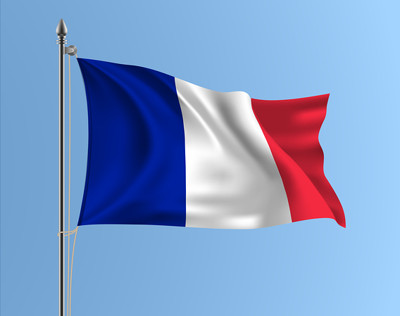
Outside of the UK and Ireland, France flies the flag for the rest of Europe when it comes to horse racing. The country is able to host some of the biggest horse races in the world, none bigger than that of the Prix de l’Arc de Triomphe.
French horse racing is governed by France Galop whose role it is to oversee anything and everything that goes on in the country in regard to horse racing. France is able to host a massive 17,000 races every year and France Gallop are in charge of making sure that they run like clockwork.
One of the biggest differences to horse racing in France compared to horse racing in the UK is the betting side of things. There are no bookmakers at any of the racetracks and instead people will be betting on a parimutual style of bookmaker, which works in much the same way that the Tote does in the UK.
This means that punters will be betting into a pool and then they are paid dividends at the end of the race. Unlike the UK though, the punters get a rough idea of the odds when they buy their dividends before the start of the race. It’s only after the race that the dividends are announced.
Another thing to note is that if there is a race with two or more horses from the same stable, then your bet will be split between these two horses. French betting rules state that all stables are linked in each race. It will mean that dividends are reduced as a result.
France has 252 racecourses in total and they average around 8 meetings a day. Racing starts in January and runs all year round, although the Prix de l’Arc de Triomphe is widely regarded as the season-ending race.
French racing in numbers:
- 252 racecourses in 75 French departments
- 17,000 races per year
- 29,000 horses in training
- 43,530 horse breeders
- 10,597 horse owners
Both flat races and jump racing can be found in France, but the majority of races are flat. The majority of courses are turf and they all have a certain charm about them, which is an iconic feature of French racing. Whilst not an upper-class sport in France, horse racing tracks have been keen to keep their tradition of being better than most around the world.
Paris is the hub of racing in the country and you could argue that the city hosts the majority of the major races there. There are a number of iconic tracks located in Paris as a result, including:
- Hippodrome Vincennes
- Hippodrome Auteuil
- Chantilly
- Hippodrome Longchamp
Notable Races
Prix de l’Arc de Triomphe
The Prix de l’Arc de Triomphe is not just the most iconic race in France, but also one the most in the world. It’s location of Longchamp is as visually stunning as you will find, which adds to the theatre of this Group 1 race.
It’s been running since 1920 and comes with a purse of €5 million, making it the richest race in France and second richest flat race on turf in the world, behind The Everest in the US.
The track is set out over 2,400m and with it allows horses aged three and up. There have been 8 horses to date that have won the race 2 times, with no horse ever winning in 3 times. However, Enable has won the race in 2017 and 2018, with the 2019 race just weeks away as they try to become the first horse to not only win it 3 times, but also 3 times back to back.
Grand Steeple-Chase de Paris
The Grand Steeple-Chase de Paris is Fence’s equivalent of the Grand National and takes placed at the Auteuil Racecourse in Paris. It’s a beast of a race at 6,000m and is the biggest steeplechase in the country with a purse of €850,000.
The Group 1 race is widely seen as one of the most prestigious jump races in the world and attracts and international field.
Middle East
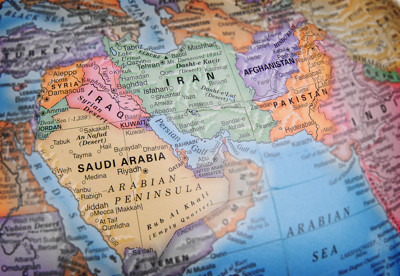
Horse racing is one of the most popular sports across the Middle East. The area, particularly places like Dubai, is known for its glitz, glamour and of course, oil, but sports like horse racing have a rich history in the area and it’s been an important pastime for many.
The sport is now one of the most watched, camel racing of all things being a close second. The infrastructure around the sport has been improved vastly over the last few years and as a result they are now able to boast some of the biggest races in the industry.
There are three main areas that we are going to break this section down into, as the information will vary slightly for each. They are UAE (specifically Dubai), Qatar and Saudi Arabia.
Dubai
The growth of Dubai as a city over the last 25 years has been phenomenal. It’s only when you see pictures of what it used to be like and even when they were just starting to host sporting events, that you realise just how far they have come.
Whilst the money in the city is based heavily around bars, restaurant, buildings, cars and shops, the sports side of things is now starting to draw in a new crowd to Dubai.
Horse racing has been at the heart of this expansion. To really get a foothold, in true Dubai fashion they build one of the biggest and most stunning racetracks in the world, in the form of the Meyden.
The Meyden is truly massive and the main grandstand is able to host 60,000 people alone, which is bigger than most racecourses in the UK. It’s here where you’re going to see the city’s biggest and most popular races, along with its golf course, gallery, museum, hotel and conference center. It’s almost like a small town within a city!
Racing in the country is overseen by the Emirates Racing Authority (ERA) whose Chairman is that of Sheikh Mansour bin Zayed al Nahyan.
Dubai World Cup
The Dubai World Cup is not just the biggest race in the country, but it’s widely regarded as the biggest in the world. For a long time it was the richest as well, with a purse of $12 million, but it keeps going back and forth with a couple of others and this title seems to change hands almost yearly.
The race, like the majority of races in Dubai is run on dirt and takes on the 2,000m track. The race has been running since 1996 and created by Sheikh Mohammed bin Rashid Al Maktoum, who also happens to be owner of the famous Godolphin stable. In fact, the Godolphin stable has won the race more times than any other, with 8 in total. The only multiple winning horse is that of Thunder Snow, winning in 2018 and 2019, respectively.
Qatar
Racing in Qatar is something that is on the up. The country is actually best known for the Qatar Racing Group, who have a number of successful racehorses that they train all over the world.
The country’s premier race is that of the Emi’s Sword Festival and takes place each year in Doha. It’s not a worldwide known race as yet, but already pulls in a purse of $1 million, so that will likely change soon enough.
The country has just one racecourse to speak of as yet and this is where all the major races will be held. Their season last just 6 months and avoids the unbearably hot weather in the summer months.
Saudi Arabia
Saudi Arabia is another country whose horse racing roots are set to grow in stock rapidly over the next few years. The reason behind is this is down to one race; The Saudi Cup.
The Saudi Cup is getting a huge injection of money for the purse and will be lifted to that of $20 million for the next race in 2020. This will make it the richest horse race in the world, overtaking the likes of the Dubai World Cup and the Pegasus in the United States in doing so.
The race will be hosted at King Abdulaziz Racetrack, which is located in Riyadh. The race is run over 1,800m in the dirt, which is the most common surface for race in Saudi Arabia.
Hong Kong
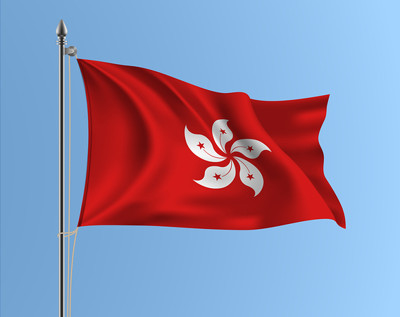
Horse racing in Hong Kong is another market that is one the rise. The destination is one that has been a firm favourite for race fans for many years now, but it’s only just starting to get the international recognition that it deserves.
The standout tracks are that of the Sha Tin and the Happy Valley racecourse. In fact, the latter is often voted one of the most picturesque racecourses in the world, with the stunning Hong Kong skyline in the background.
The markets turn over more than £135 million in bets for a 12-month period, helped by the ties with major UK brands such as Ladbrokes, Coral and Betfred.
Horse racing in the country is run by the Hong Kong Jockey Club (HKJC) and its their role to make sure that the sport runs to the best of its ability. They have been about since 1884, and many claims this to be a monopoly as result.
The International Race event at Happy Valley is the biggest meeting of the year. It includes 4 Group 1 races, including the Hong Kong Vase and the Hong Kong mile. Racing is starting to become a much more international field in Hong Kong as a result, attracting stables from across Europe, Asia and the Middle East.